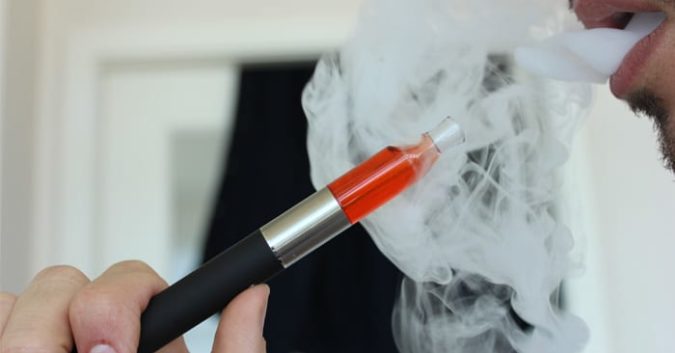The American Lung Association (ALA) released their annual “State of Tobacco Control” report, and the results were not good. Electronic cigarette use, also known as vaping, has skyrocketed, especially among minors. The report criticizes both state and federal regulators for failing to act quickly to counter what has quickly become a public health crisis.
Tobacco is the leading cause of preventable death and disease in America. Each year, it kills more than 480,000 people, and 16 million Americans live with tobacco-related diseases. No one wants these numbers to rise, especially among kids. Unfortunately, it looks like a new generation of Americans is destined to die as a result of tobacco.
What Is the “State of Tobacco Control” Report?
The ALA keeps track of the steps state and federal governments are taking to reduce tobacco use. This year, the ALA gave regulators 5 grades based in 5 areas of tobacco prevention:
- Smoke-free Air Laws
- Tobacco 21 Laws
- Tobacco Prevention Funding
- High Tobacco Taxes
- Access to Quit Smoking Treatments.
The ALA has been pushing for these policies, and they save lives. Promoting smoke-free air, for example, can have a huge impact. Secondhand smoke is attributed to 41,000 deaths a year.
The report showed record lows for adult and youth use of traditional cigarettes. This is a testament to the success of tobacco prevention campaigns and stop-smoking policies that have taken decades to enact. As proud as the ALA was of these achievements, the youth vaping epidemic threatens to obliterate any and all progress.
Spike in Teen Vaping Wipes Out Public Health Gains
The surge in vaping is, according to a study cited by the ALA, “the largest year-to-year increase in substance use ever recorded in the U.S. for 10th and 12th grade students.” This study was released the day before the U.S. Surgeon General issued a public health advisory about the new “youth vaping epidemic,” citing the 900% increase in youth vaping from 2011-2015.
How did this happen?
In retrospect, it’s become painfully obvious that savvy and heartless marketing “gurus” at e-cigarette companies used social media to hook children on their addictive drug. Before parents, teachers, and regulators could act, thousands of kids saw how “cool” it was to vape.
“Cool” is probably not the word that social media influencers used to sway this generation of kids, but the logic is the same her as it was with Joe Camel. Tobacco merchants have known for decades that gimmicks like cartoons and flavors will attract kids to their powerfully addictive products.
State and Federal Regulators Fail to Take Action in Response to Youth Vaping Epidemic
According to the “State of Tobacco Control” 2019, more than 1 million kids started using e-cigarettes in the past year. From 2017 to 2018, E-cigarette usage increased 78% among high school students. These numbers are terrifying, but they are not a surprise to anyone who has been paying attention.
The ALA, along with other public health organizations, has been advocating for regulators to take action on e-cigarettes for years. Instead of meaningful action, the ALA report found:
“A disturbing failure by federal and state governments to take action to put in place meaningful and proven-effective policies that would have prevented, and reduced tobacco use during 2018.”
Tobacco companies are intent on hooking young users because they will likely use for a lifetime. Quitting is extremely difficult, despite the widely known health risks, in part because nicotine literally rewires a person’s brain. These companies don’t care about the deaths, the disease, or the economic costs of smoking, which the ALA estimated at $290 Billion.
‘Asleep at the Switch’ — FDA Gets a Failing Grade
No one is expecting tobacco companies to suddenly grow a heart as they destroy lungs. But people do count on the federal government to take the necessary steps to protect the public health.
Harold P. Wimmer, the National President of the ALA, singled out the Food and Drug Administration (FDA) for not using their authority to reign in e-cigarette makers:
“The FDA in particular has been asleep at the switch for far too long. Their failure to act for years set the stage for e-cigarette use among youth to finally explode into an epidemic”
What’s worse is that inaction on the part of the FDA emboldens tobacco companies, according to Wimmer. Partial steps are not going to do anything. Banning a few flavors of e-cigarettes is a token gesture. The Center for Disease Control (CDC) has reported that 50% of high school students use mint and menthol e-cigarettes, 2 flavors the FDA continues to allow.
Other FDA actions, like asking tobacco companies to make voluntary changes, contribute to what Wimmer describes a “vicious circle.” After tobacco companies succeed in delaying regulation, it emboldens the industry to “devise new and egregious ways to addict youth and sustain addiction among current users.”
Moving Forward Is Not Complicated
Traditional cigarettes take millions of lives prematurely and impose a steep economic burden on the U.S. healthcare system. Much amazing progress has been made in reducing tobacco use, but the companies that profit from selling it are never going to stop trying.
Technology has changed, and so too has the face of tobacco. Juul, the leading brand of e-cigarettes among minors, recently merged with tobacco giant Altria, one of the world’s largest tobacco companies. It’s a scary marriage, to say the least, and one that has produced a new enemy of the public health. So far, regulators have allowed companies like Juul to run wild. The damage has been devastating.
In the words of Wimmer, “the health and futures of our children are on the line, and we cannot afford any further delays.” When will those who protect the lungs of our youth speak up?
